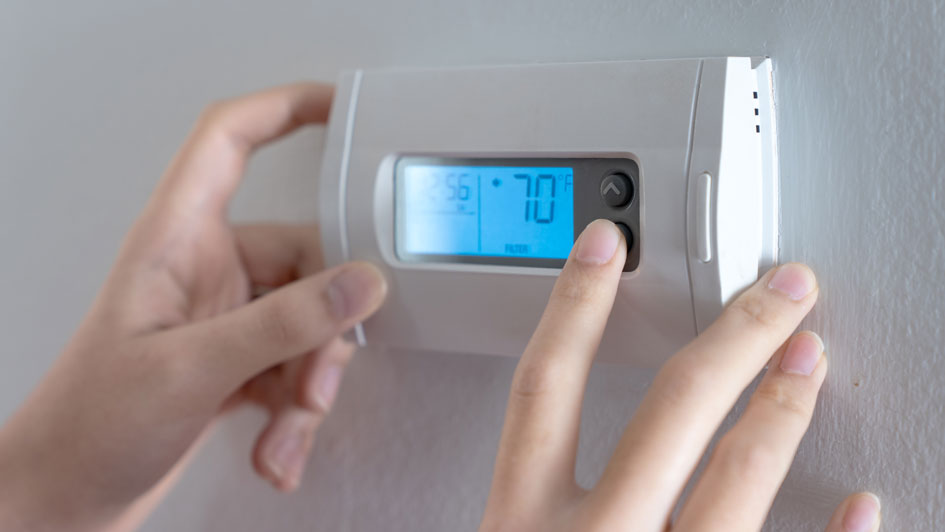
Everyone’s always looking to save money on their utility bills, but it turns out there’s a way to do it when you aren’t even home.
The secret is your thermostat. By using automatic schedules, you can tailor the temperature to your needs. You can create a number of automated temperature settings for when you’re home, away or even when you’re asleep.
By trying a few of these schedules, you'll be able to enjoy comfortable temperatures while cutting down your energy bills. Here are some ways your thermostat doesn't have to use up all your summer spending money:
While at Home
Pretty much whenever you're home, you want a nice range of pleasant temperatures. That’s why it’s best to set your thermostat lower in the summer if you're indoors to appreciate the cool air.
But in terms of energy efficiency, the best range for the summer is in fact anywhere between 78 and 80 degrees Fahrenheit. By adjusting things a few degrees, you'll keep cool while still keeping your energy bills low.
While Gone
When it comes to setting the temperature for a vacation or other trip away from the house, the majority of homeowners will set the thermostat higher for while they're gone.
For some homes, you can set the thermostat to higher temperatures like 88 degrees while no one is home and then lower it back to the sweet spot of 78-80 degrees after you return. This way, your air conditioning won't have to work constantly to cool an empty house.
While Asleep
To enjoy a good night's sleep during the summer, you want a temperature that's nice and cool. You should try and keep things between 68-72 degrees Fahrenheit. There's less risk of getting too hot or too cold at some point overnight.
Other Ways to Use Less Energy:
- Install a smart thermostat: Using a smart thermostat in the summer helps save money on energy costs since it can plan your temperature adjustments according to your lifestyle and home environment. A smart thermostat manages the temperature if you are home or sleeping, before allowing it to warm up when the house is empty. With reliable brands like the Lennox iComfort, you are able to adjust settings and schedules through your smartphone, tablet or laptop. Requesting smart thermostat installation in your Norton home can be the simplest strategy for maintaining comfortable, yet energy-efficient temperatures no matter where you are.
- Replace current equipment with a newer HVAC system: Upgrading your HVAC system saves money right from the start. If a system boasts high energy efficiency, you can also count on lower utility bills since more efficient equipment requires less energy to achieve comfortable temperatures. Air conditioning installation in Norton is a breeze for experienced professionals like HCE Systems.
- Schedule annual AC maintenance: Investing in or ignoring regular air conditioning maintenance in Norton can have a significant impact on your utility bills. With regular cleaning of the coils, checking for damage and clearing ventilation of dust and debris, you may notice your HVAC system run more efficiently. Increasing efficiency also limits strain on key parts and lowers operational costs, leading to lower energy usage, which translates into lower energy bills.
- Clean or replace the air filter on a regular basis: Regularly changing the air filters in your HVAC system saves money by improving airflow. When filters are clogged with dirt and debris, your air conditioner will have to work harder, and the added strain may impact the system’s life span and lead to breakdowns.
- Verify your attic has enough insulation: Insulation is a vital part of maintaining an energy-efficient home, keeping the hot air outside and the cool air inside through summer. The North American Insulation Manufacturers Association (NAIMA) recommends that homes in the southern United States should possess at least 13-14 inches of insulation, while states further north need 16-18 inches.
- Check your ductwork: Damage to the ventilation is capable of increasing your energy bills much more than 20 percent, plus it can also lead to problems with your water heater, clothes dryer and other appliances to get into the atmosphere of your home. Watching for signs of leaks and sealing them can address both concerns.
- Seal all other leaky spots in your home: Finding and sealing any remaining leaks in your home with caulk, foam sealant or weather-stripping can help keep it cooler on hot summer days. Don't forget to check for any gaps around windows, doors and even outdoor fixtures. Devoting time and effort to sealing leaks now can help you save a lot over time.
